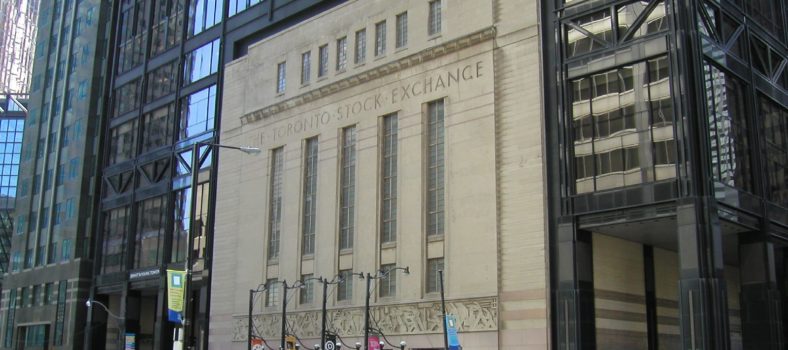INTERVIEW
By Brendan Read
Canada and the United States have long been deeply connected financially with each other through trade, including investments, tourism and individual migration for work, education and also visits, like for shopping and for retirement. Canadians make and receive payments while in the U.S., and from and to U.S. businesses and institutions, and vice-versa.

Sharon Haward-Laird, BMO
To explore and understand Canada-U.S. banking and payments, trends and challenges, Payments Business recently interviewed Sharon Haward-Laird, who is the head of North American treasury & payment solutions at BMO (Bank of Montreal) Financial Group.
Payments Business (PB): How big and what is the growth potential for cross-border banking: Canadians in the U.S., Americans in Canada, both individuals and businesses?
Sharon Haward-Laird (SH-L): According to government data close to 400,000 people already cross the shared border between Canada and the United States every day for business and personal reasons. The U.S. accounts for the fifth largest source of immigrants to Canada, with over 250,000 residents. In turn there are around 783,000 Canadians who live in the U.S. There is a lot of opportunity, and we expect that cross-border banking is going to continue to grow.
Whether within Canada or the U.S., businesses have the opportunity to look north or south to help them grow, tap into new markets and increase their potential customer base and generate new revenue streams. For individuals, it’s much easier to buy and navigate online to purchase products that are not necessarily available locally. They are getting more choice than was traditionally available and, here too, we expect to see growth.
BMO is focused on creating seamless cross-border banking experiences for all our customers. For our corporate cross-border customers, expansion into the U.S. is a natural path as they look to grow in a larger market. An estimated 70 per cent of corporate customers have cross-border needs. Businesses are looking for a financial services organization that can provide them with services that meet all their financial needs, regardless of which side of the border they’re on, across personal and business banking, wealth management and capital markets. For us, it’s a competitive differentiator.
PB: What is the size/growth potential of the payments segment e.g. Canadians using U.S. accounts to pay bills and making purchases while there and vice-versa?
SH-L: Canada is one of the largest international remittance markets in the world. With advances in technology and innovation, consumers have access to products and services both domestically and internationally. As the economy becomes increasingly global, the need for seamless and ubiquitous cross-border payments capabilities will continue to increase.
Boston Consulting Group’s Global Payments 2018: Reimagining the Customer Experience report highlights the payments segment as one of the brightest spots in financial services. Payments businesses globally are on track to add $1 trillion in new revenue through 2027, said the report, as financial institutions continue to invest in digital technology and look to expand and enhance their capabilities. A key driver for growth is ensuring that there is an integrated payments infrastructure and technology in place to provide a seamless customer experience.
PB: What are the challenges entailed in cross-border banking and payments?
SH-L: Businesses with cross-border financial operations need to understand both the differences between the two banking environments and the implications of these differences. The main hurdles that any financial institution faces when it comes to cross-border banking would be legacy technology and infrastructure, differences in regulatory and legal requirements and brand awareness.
On the surface, the financial products, services and processes closely mimic one another, but there are nuances across markets. These include time required for the clearing processes in each country —for corporations this can impact cash flow—how payments flow between multiple touchpoints, currency conversion and screening to ensure adherence to regulatory requirements. There may even be differences in the data formats in which the payment information is packaged as it travels between the sender and the receiver. It’s important to understand these nuances and have practices in place to account for them. For a business, this is where a banking partner can come in and provide advisory support to help.
When a business is looking at their financial institution and their cross-border capabilities, it’s important to understand where their priorities are and if they’re making investments in their technology and payments infrastructure. It’s also important to understand if they’re able to manage both the complexities of different regulatory and legal environments and the nuances that are part of the cross-border payments process. For example, at BMO we’re implementing Mastercard Send to deliver faster, more cost-effective international payment services seamlessly and securely to bank accounts in more than 75 countries.
PB: Are there developments in play now and in the near future, e.g. payments modernization, that could improve cross-border payments?
SH-L: There are a number of initiatives on the horizon that are both regulator- and market-driven, such as faster, real-time payment platforms and the standardization of payments data using the global ISO 20022 messaging standard. As these modernization initiatives continue to evolve the payments infrastructure, businesses will see a faster and more data-rich payments environment. Using the same ISO 20022 data standard in the U.S. and Canada will allow for less manual processes, more transparency and greater efficiency.
At BMO we believe that payments modernization is an opportunity to positively impact the customer experience. There are two examples I would point to. First, the globally recognized work we’re doing around the implementation of a payment hub, (https://bit.ly/2H5QurT) which will pave the way for the delivery of faster, more efficient and simpler solutions for our customers. Second, the work underway to implement a single North American wire platform that will improve speed and consistency for customers on both sides of the border. Both initiatives will enable us to better support our customers.
PB: What is BMO’s strategy in tapping this market? Why did you take that tack?
SH-L: One thing we keep hearing from our customers is that they’re looking for simplified cross-border payments experiences. We’re serving customers seamlessly across all lines of business and throughout our integrated North American footprint. And we see a lot of opportunity with cross-border banking: it is another way we can be a trusted partner for our customers.
With our capabilities, we’re uniquely positioned to help our customers transact on both sides of the border by offering a full spectrum of financing, advisory and wealth management services. For example, our treasury solutions include a comprehensive suite of North American payment, receivables, liquidity and fraud mitigation capabilities, accessible through an integrated online and mobile treasury management platform.
We also have operations in select global markets such as Europe, Asia, the Middle East and South America, which allows us to provide all our customers with access to economies and markets around the world.
PB: What’s next for BMO in cross-border banking and payments?
SH-L: We’re focused on taking the inherently complex matter of banking cross-border and making it simpler for our customers, offering an integrated and consistent approach to service and support. Our cross-border banking capabilities are one of our strengths, but we’re not sitting still. We’re continuing to invest and build capabilities with a focus on simplifying the experience for our customers.




